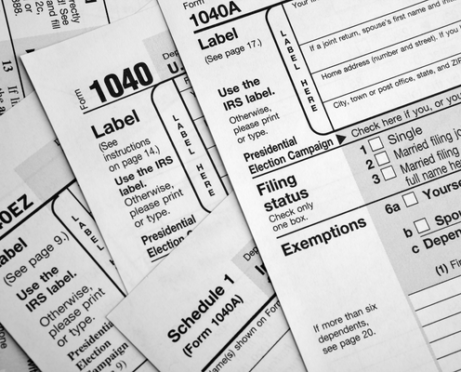
Personal finances can get complex for many older adults with multiple streams of income, the need to create a retirement “paycheck,” Social Security benefits, required minimum distributions, and more. All of these events impact income taxes.
This post describes thirteen tax-related topics (in no particular order) that people should be familiar with in later life.
1. Required Minimum Distributions (RMDs)
Taxpayers with traditional IRAs, SEPs (self-employed), and employer retirement savings plans (401(k), 403(b), 457, and TSP) must begin annual RMDs upon reaching age 72.
At this point, RMDs are added to taxable ordinary income.
RMDs are reported to taxpayers and the IRS on form 1099-R. Income taxes on RMDs need to be planned for with tax withholding by the plan custodian or quarterly estimated payments to the IRS.
2. Qualified Charitable Distributions (QCD)s
Taxpayers aged 70 ½+ can donate RMDs from their traditional IRA to a qualified charity. QCDs count toward RMDs, thereby reducing taxable income. QCDs are made directly from the IRA custodian (e.g., a mutual fund company) to the charity.
The maximum annual exclusion for QCDs is $100,000 ($200,000 for married couples filing jointly). Funds must be withdrawn by the RMD deadline: December 31 of each tax year.
3. Increased Standard Deduction
Taxpayers age 65+ (and those who are blind) get an increased standard deduction on federal income taxes. For singles in 2022, the standard deduction is $14,700 ($12,950 + $1,750 additional for age 65+). For married couples filing jointly, the standard deduction is $28,700 ($25,900 +$1,400 x 2 or $2,800 additional).
4. Form 1040-SR
This tax form was designed for taxpayers age 65+, who can use either the standard Form 1040 or Form 1040-SR, which uses larger type and highlights tax benefits for older adults, such as a “standard deduction chart” that lists the larger standard deductions available to older taxpayers by filing status (single, married filing jointly, etc.).
Taxpayers do not have to be retired to use Form 1040-SR and it can be used whether they itemize or take the standard deduction.
5. Taxable Social Security Income
Income ranges for taxation of Social Security benefits are not inflation-indexed so more older adults pay taxes on part of their benefit each year.
Up to 50% of Social Security income is taxable for singles with a combined income (adjusted gross income + non-taxable income + ½ of Social Security benefit) of at least $25,000 and couples with a combined income of at least $32,000.
Taxes rise to 85% of Social Security benefits for singles earning at least $34,000 and couples with a combined income of at least $44,000.
6. Catch-Up Savings Contributions
In 2022, workers age 50+ by year-end can contribute an additional $1,000 to a traditional or Roth IRA for a maximum contribution of $7,000. This same group of older workers can contribute an additional $6,500 to an employer savings plan (401(k), 403(b), 457, and TSP) for a maximum contribution of $27,000.
Over 10 to 20 remaining years of an older worker’s career, the additional amount that can be saved is impressive.
7. Income-Related Monthly Adjusted Amount (IRMAA)
IRMAA is the additional Medicare Part B and Part D premium charged to higher earners. It is based on modified AGI from two years prior (e.g., 2020 tax returns for 2022 premiums).
In 2022, singles who earned $91,000 or less or couples filing jointly who earned $182,000 or less pay the standard $170.10 Part B premium. Above that, there are five income ranges with monthly premiums from $238.10 to $578.30.
8. No More Early Withdrawal Penalties
Once taxpayers are age 59 ½, they are no longer subject to the 10% early distribution tax (penalty) for withdrawals from IRAs, SEP plans, and employer retirement savings plans. This provides flexibility to withdraw money anytime in the 12 ½ years between age 59 ½ and when RMDs must begin at age 72.
9. Death of a Spouse
While this can happen at any age, it is more common in later life. In the year of a spouse’s death, the surviving spouse can file as “married filing jointly.”
After that, unless survivors meet the criteria for two years of qualifying widower status, they must generally file as single for the year following the death.
This can unleash all sorts of tax implications including a higher or lower marginal tax bracket and IRMAA payments and changes in tax withholding.
10. Income Tax Scams
Again, while scams can happen at any age, older adults are often frequent targets because they have greater accumulated wealth and may be more trusting and easier to contact.
Common tax scams ask victims to disclose their bank account information for a fake “deposit” or make immediate payments with prepaid debit cards or wire transfers. Another common scam is using victims’ stolen Social Security numbers to file false returns to obtain refunds.
11. Medical Expense Tax Deduction
This itemized deduction can be taken at any age, but may be more valuable to older adults with increased medical expenses in later life. Qualified unreimbursed medical expenses that exceed 7.5% of AGI can be deducted on Schedule A.
For example, with an AGI of $40,000, expenses exceeding $3,000 ($40,000 x 0.075). Expenses such as false teeth, hearing aids, glasses, wheelchairs, and premiums for long-term care insurance qualify.
12. Larger Account Balances
For older adults who saved/invested for 4+ decades, accumulated assets bring tax concerns (I hesitate to call large accounts a “problem”) they didn’t have when they were younger.
This includes portfolio rebalancing large dollar amounts (within tax-deferred accounts can avoid immediate taxation) and large capital gains distributions from mutual funds (e.g., when you own thousands of shares vs. a few hundred).
This speaks to the need for adequate tax withholding and tax diversification (ownership of assets in a combination of taxable, tax-deferred, and tax-free accounts).
13. Tax Rules and Resources
Older adults can earn slightly more money than those under 65 before they are required to file a tax return.
The tax filing threshold for 2021 taxes due in April 2022, is $14,250 for single filers age 65+ (vs. $12,550 for younger taxpayers) and $28,500 for a married couple with two spouses age 65+ (vs. $25,100 for younger couples).
As for income tax resources, there is an income-based tax credit for low-income older adults that requires the use of Schedule R. In addition, the Tax Counseling for the Elderly (TCE) program offers free tax help to taxpayer age 60 or older.




